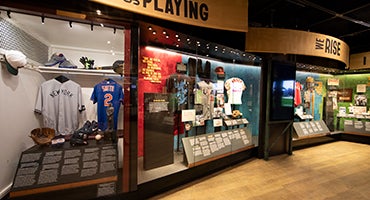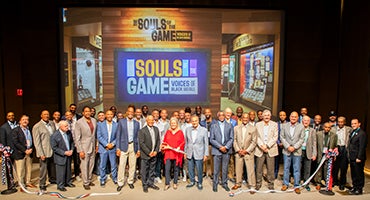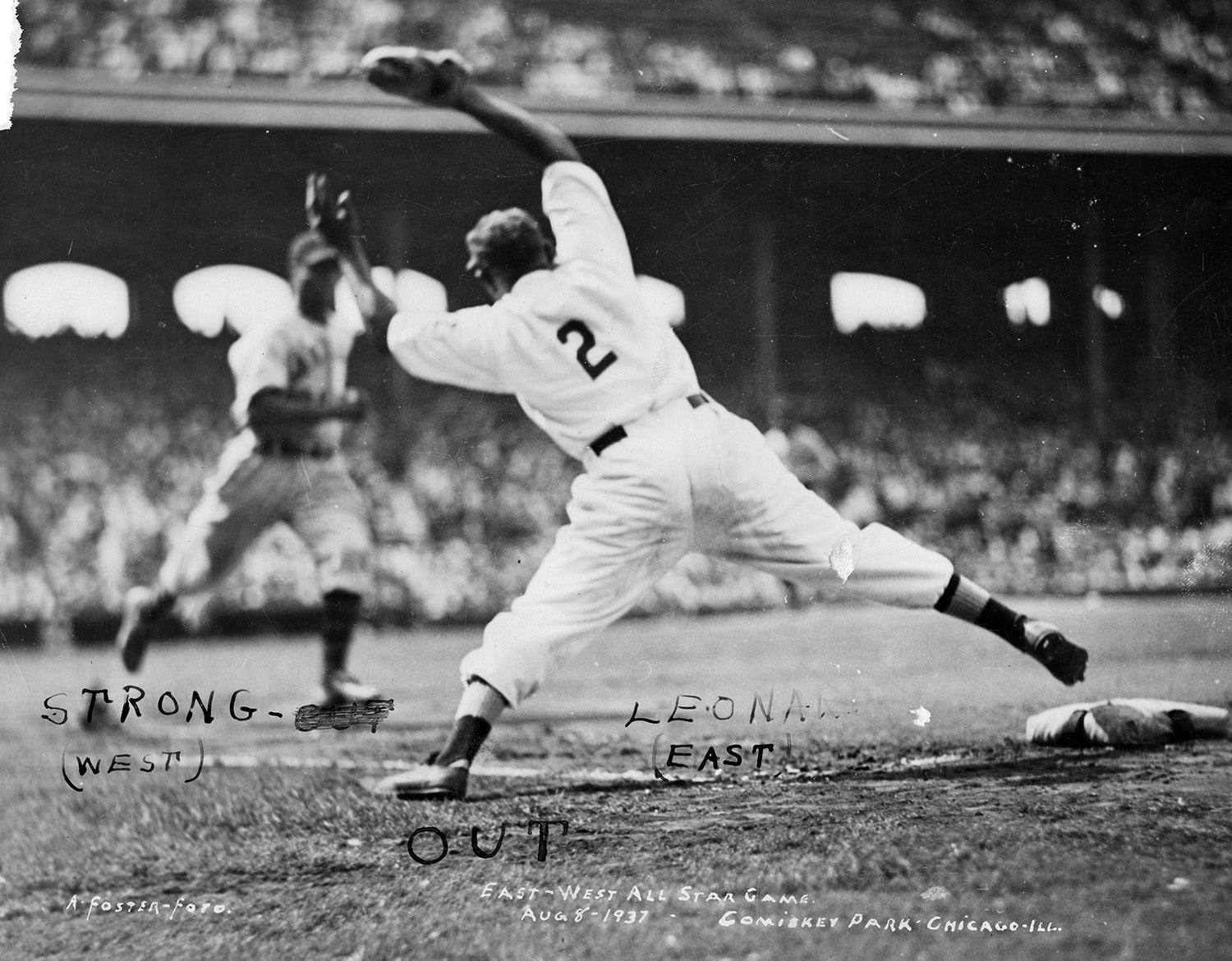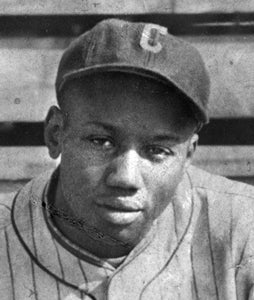- Home
- Our Stories
- Gibson's powerful swing through Puerto Rico showcased in The Souls of the Game
Gibson's powerful swing through Puerto Rico showcased in The Souls of the Game
At a time when Major League Baseball is integrating Negro Leagues statistics into the numerical record of the American and National leagues, it is most appropriate that the Hall’s new exhibit, The Souls of the Game, features a key artifact from the career of Hall of Fame catcher Josh Gibson. It is a trophy that Gibson was awarded as the top player in the Puerto Rican Winter League in 1941-42.

And it is Gibson who officially has the highest single-season batting average in major league history, now that his .466 batting average from the 1943 Negro Leagues season is part of the revised statistical archive. (The record had belonged to fellow Hall of Famer Hugh Duffy, who batted .440 for the Boston Beaneaters in 1894.) In addition, Gibson now holds the record for the highest slugging percentage in a season, an eyepopping mark of .974 compiled in 1937. And in terms of career records, Gibson now has the highest batting average in big league history, with his .373 lifetime average surpassing Ty Cobb’s previous record of .366.
"As you know, these past two months have been a huge success for Negro Leagues players and their families," said Sean Gibson, the great grandson of Josh and the executive director of the Josh Gibson Foundation. "First, the Hall of Fame opened their Souls of the Game exhibit over Memorial Day Weekend, and a few weeks later, MLB introduced Negro Leagues stats into their official records. When they introduced those stats, Josh Gibson became the all-time leader in a number of statistical categories.
"When I had the chance to see The Souls of the Game, I thought the Hall of Fame did a great job putting the current African-American players with the past and also showing that those eras can be merged... Josh Gibson's trophy is an important part of that connection. The Hall of Fame having this trophy on display is important because there aren't too many Negro Leagues artifacts out there, and especially of Josh."
Even before the statistical revisions, Gibson has long been a huge component of Negro Leagues history. His Negro Leagues career spanned from 1930 to 1946 (albeit with some gaps in between), as he became arguably the leagues’ most feared hitter with the Pittsburgh Crawfords and Homestead Grays. During that time span, Gibson also participated frequently in winter league ball; in contrast to the color barrier established by Organized Ball, the winter leagues accepted both white and Black players.
"As we all know, Negro Leagues players played baseball all year round," Sean Gibson said. "During the summer months and spring, they'd play in the states in the Negro Leagues. In the winter, they'd play winter ball in Latin American countries. My grandfather used to talk about how, after being treated so well in the Latin countries, it was hard to come back to the United States."
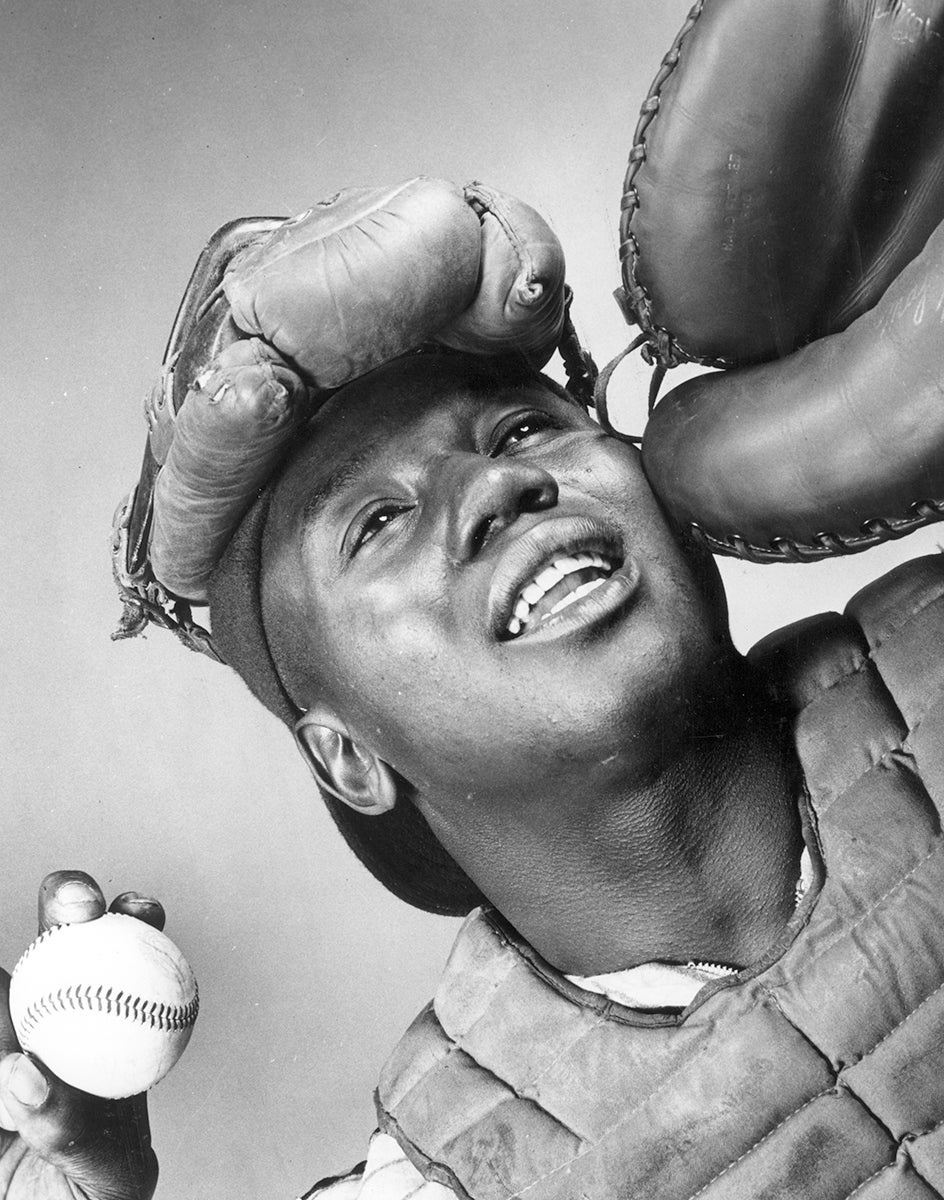
In 1940, Gibson opted not to sign with any of the Negro Leagues teams, instead accepting a more lucrative financial offer from the Veracruz Azules in the Mexican League. Gibson played only about a quarter of the Mexican League season, but performed well, hitting 11 home runs, tied for the second highest total in the league.
When the Mexican League season came to an end that fall, Gibson decided to return to the Puerto Rican Winter League, where he had played the previous winter. (Gibson played many seasons of winter league ball, sometimes in Puerto Rico and sometimes in Cuba.) Gibson completely dominated the Puerto Rican league, leading all players with 13 home runs while also batting a league-best .480, a full 71 points ahead of runner-up Willard Brown. He also hit one of the longest home runs of his storied career, blasting a ball that was estimated to have traveled roughly 600 feet. Years later, Frank Howard would hit another tape-measure home run in Puerto Rico, but that home run reportedly measured 60 feet short of Gibson’s mammoth blast.
"In 1941-42, he was also the manager of the Santurce Crabbers, as well as a player," Sean Gibson said. "To this day, they talk about him in Santurce. He made a huge impact in Puerto Rico."
In 1940-41, Gibson emerged as the best player in the Puerto Rican Winter League, earning the league’s equivalent of the Most Valuable Player. The trophy, given to the top player in Puerto Rico, is featured prominently in The Souls of the Game exhibit. Long and cylindrical in shape and measuring an impressive 30 inches in height, the trophy is on loan from the Josh Gibson Foundation. The trophy earlier belonged to Josh’s sister, Annie Mahaffey, who had in her possession most of Josh’s baseball-related memorabilia. Roughly 12 years ago, Annie’s daughter, Lois Gibson Cater, gave Sean the Puerto Rican League trophy.
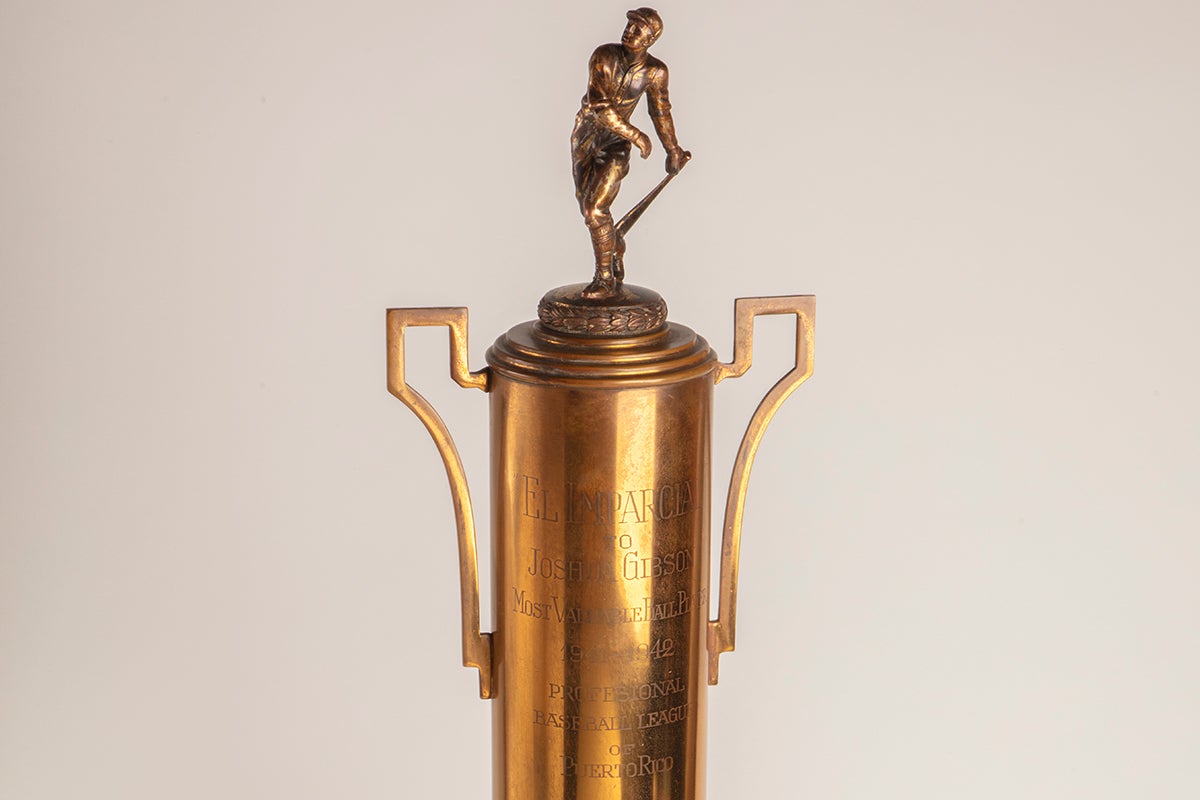
The Josh Gibson Foundation recently agreed to loan the trophy to the Hall of Fame and Museum, where it can be viewed in The Souls of the Game. And while this trophy tells only a small portion of Josh Gibson’s story, it is a part of his career that exhibits his dominance in Latin America, where he became a figure almost as legendary as he was in Negro Leagues competition.
"It means a lot to the Gibson family to have Josh's MVP trophy at the Hall," Sean Gibson said. "You can't talk about African Americans in baseball without talking about Negro Leagues baseball and Josh Gibson, so we thought this piece would be a good addition to The Souls of the Game."
Bruce Markusen is the manager of digital and outreach learning at the National Baseball Hall of Fame and Museum

